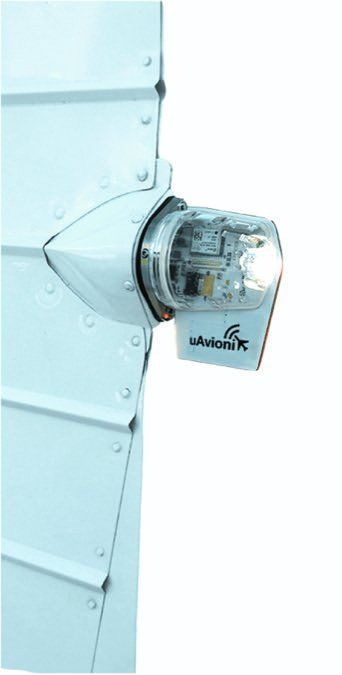UAvionix says a typical tailBeacon’s physical install will take 15 minutes. That’s possible for some, but knowing how things work on the shop floor we think that’s unrealistic for many.
With its newly TSO’d $1999 tailBeacon-the follow-on product to the popular $1849 skyBeacon-uAvionix is hoping to pick up more sales from last-minute buyers looking for a simple solution for the approaching mandate. That shouldn’t be tough because by the time this issue rolls off the presses it will be roughly T-minus eight or nine weeks until showtime for the FAA’s ADS-B airspace equipage requirement.
And shops we talk with say ADS-B sales remain brisk, while scheduling remains a challenge. If you’ve waited until now, we wish you luck. It’s as long as nine months to get on some schedules, and while some of the shops I talk with say they are installing primarily Garmin transponder-based solutions, I know a handful of A&P mechanics who have been busy installing the uAvionix skyBeacon wingtip ADS-B Out unit, which has LED position and strobe lighting.
One trusted and experienced mechanic-Paul Pelletier at the Windham Airport in Connecticut-has been traveling the country installing these things. And with the tailBeacon certified and shipping, guys like Pelletier will have another low-cost option to offer customers.
Tough Life, Simple Install

Face it, for the aircraft that lives outside, the tail section takes a beating. While cabin covers and even wing covers help protect the main structure, the tail is right up there in the elements. If you’ve ever removed an old VHF dipole antenna or position light from the tail you’ll know that it’s not the greatest spot to hang accessories.
The tailBeacon, with its self-contained aft position light (two white LEDs), GPS-equipped ADS-B transmitter, internal altitude encoder and Wi-Fi transceiver, is designed to use the existing position light wiring. That’s as simple as connecting power and ground, while using the existing lighting circuit switch. The device is mounted with two #4 screws to the existing holes and nut plates for the old lamp with a mounting plate and gasket. No, there’s not a strobe light in the tailBeacon.
I like that there’s a gasket because the tail section is generally prone to water intrusion. Once wired, simply insert the device into the mounting plate and twist to lock it in place. The image below shows the installed unit-with the fin facing directly downward. Like the skyBeacon, the device is programmed and configured with the uAvionix app utility.
Which One?
But how do you decide between the new tailBeacon and the wingtip-mounted skyBeacon? “The choice comes down to physical fit and personal preference,” uAvionix COO Ryan Braun told me. He makes a good point that some aircraft with wingtip lighting fairings aren’t compatible with the skyBeacon, which bolts to the exterior of the wingtip. But, some rear position lights aren’t we’ll positioned for the tailBeacon because they may have an elevator or horizontal stabilizer directly above the light. That could obstruct the unit’s required view of the sky for a good GPS signal.
If you already have a working strobe system you might not want to replace it, so the strobeless tailBeacon may be the better option. But for some aircraft, mounting the device on the tail just isn’t a good idea.
“I’ve seen some low-hanging tail lights on taildraggers, and I wouldn’t recommend installing a tailBeacon in its place due to the real possibility of a strike,” Braun said. Good point.
The uAvionix tailBeacon and skyBeacon both have a two-year limited warranty, and I’m anxious to see how these units hold up after collecting ice, water and generally living tough lives on the outside of the aircraft.
To date, technical support from the company has been excellent, according to the installers I talked with. We’re planning on installing a tailBeacon for a follow-up report, including a video to document the process, so stay tuned.

